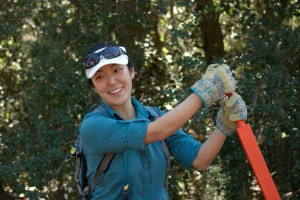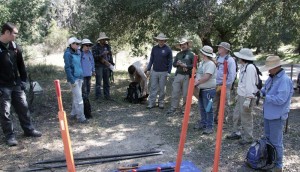Back to Natives and USFS offer hands-on training courses in Habitat Restoration and Volunteer Management
Successful habitat restoration program provides training for volunteers and agency staff for an eighth year.

Back to Natives Restoration, in a cooperative agreement with the United States Forest Service in the Cleveland National Forest, will lead a hands-on training course for restoration volunteers. This successful program is now in its eighth year. A new Volunteer Leader Training class will also be offered for those interested in improving their leadership skills, and helping others improve local wildlands.
Participants in the USFS Training class will learn how to remove invasive non-native plants using tools rather than herbicides. They will learn how to keep themselves and others safe in the field, how to manage restoration volunteers, and how to identify native and non-native plants. After passing a final exam, they will become a BTN “Green Shirt”. Once they fulfill a yearlong volunteer commitment they will be certified to lead groups of volunteers in the Cleveland National Forest.
Participants in the Volunteer Leader Training class will learn to lead groups of volunteers while learning a little more about native plants and how to protect their habitats. Successful students will attend at least five of ten scheduled Sunday volunteer events with Back to Natives in the San Mateo Wilderness in the Cleveland National Forest. After passing a volunteer leadership test, they will receive a certificate and become a BTN “Dirt Shirt”.

Individuals interested in attending either of these series of classes, which begin on January 24, 2016, can visit backtonatives.org/education for more information and to register.
Ecological restoration is a means of sustaining the diversity of life on Earth and reestablishing healthy ecosystems. Successful habitat restoration ensures that native species are protected while non-native species are removed with minimal impact. Nationwide, invasive plants cost us an estimated $33 billion per year. Invasive plants degrade wildlife habitat – they are the second-greatest threat to endangered species, after habitat destruction.
Back to Natives strives to involve the community in the process of ecological restoration and conservation because it believes that a little “ecological enlightenment” and a chance to “get your hands dirty” is the best way to improve relations between people and nature.
